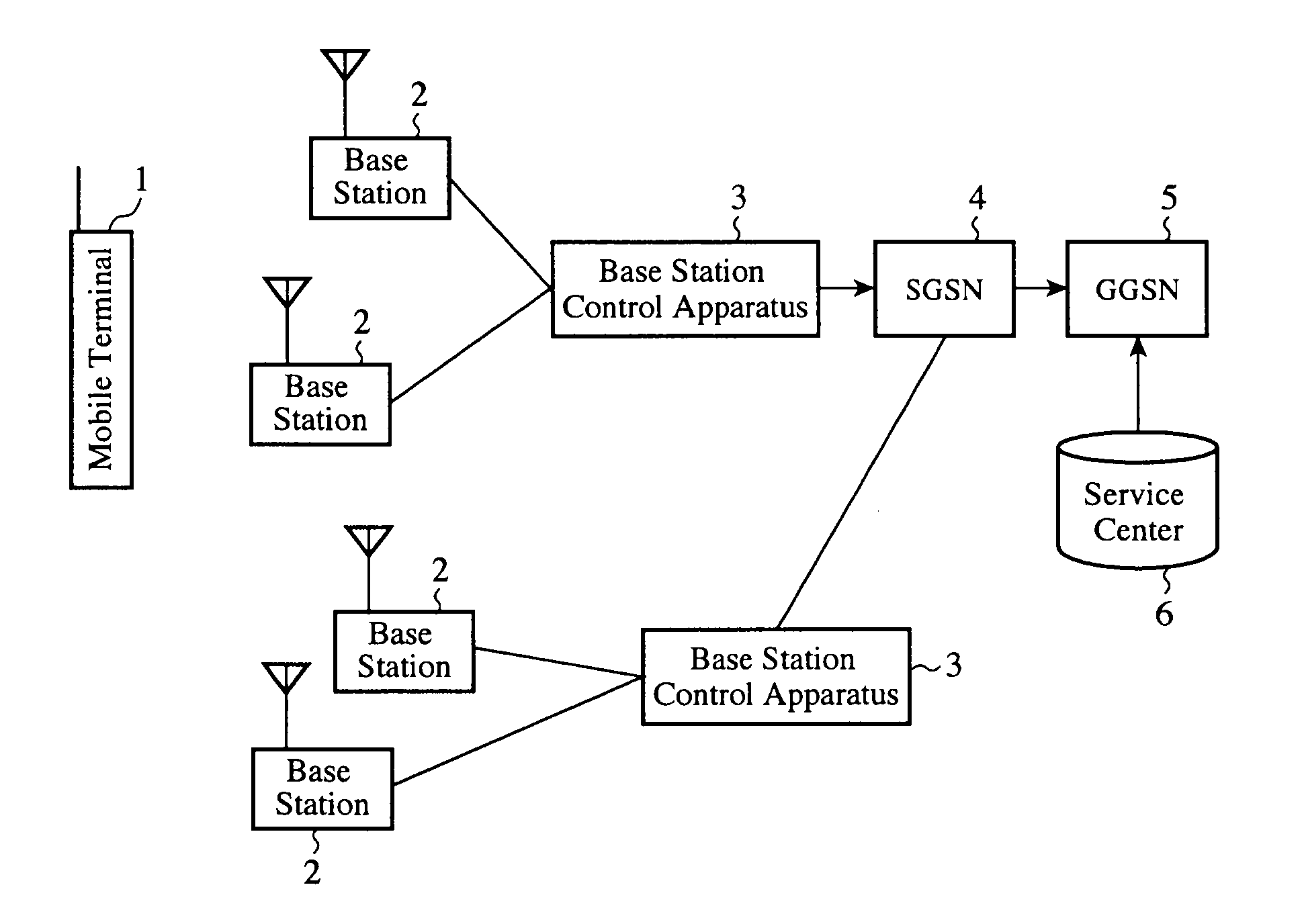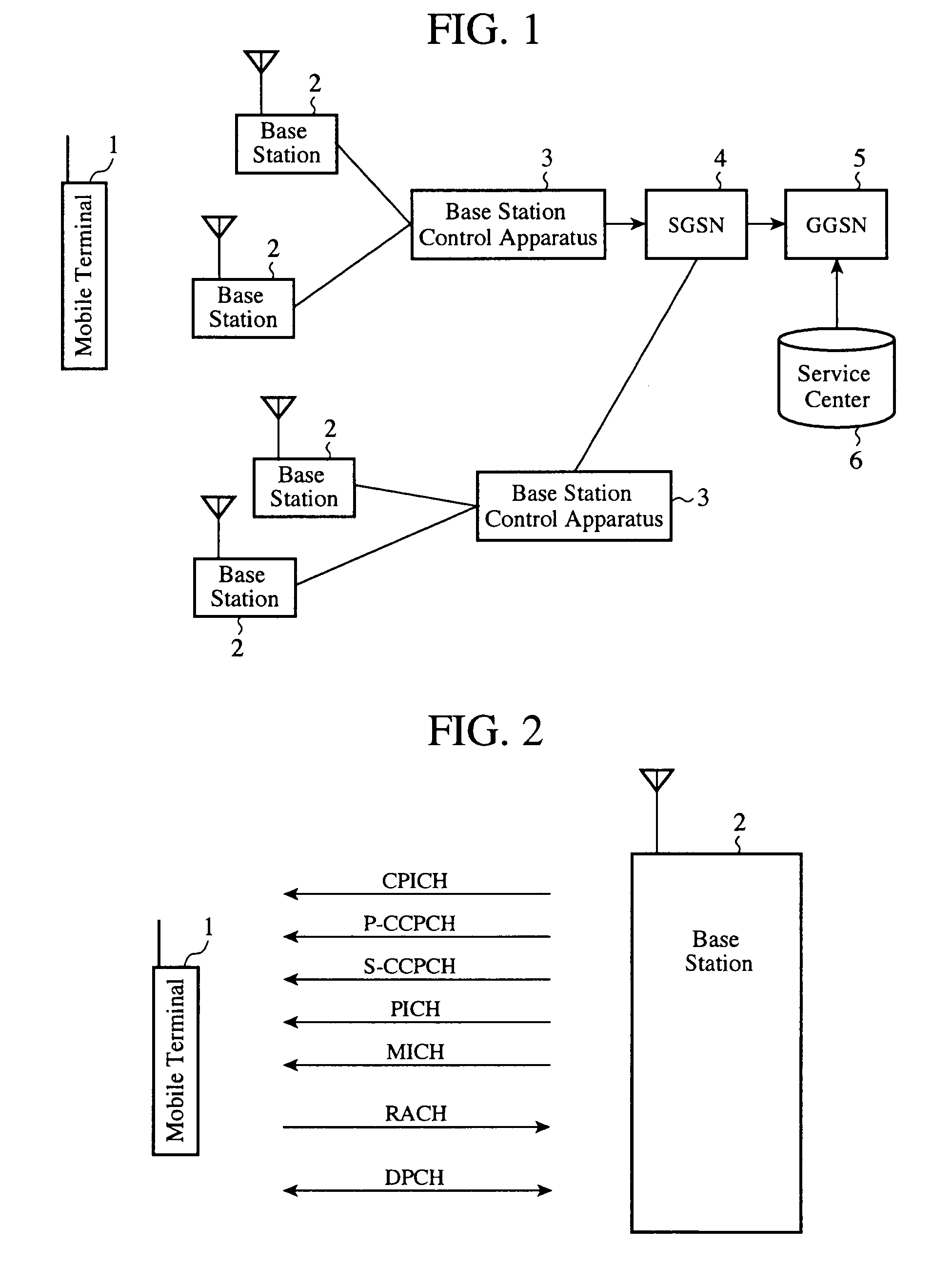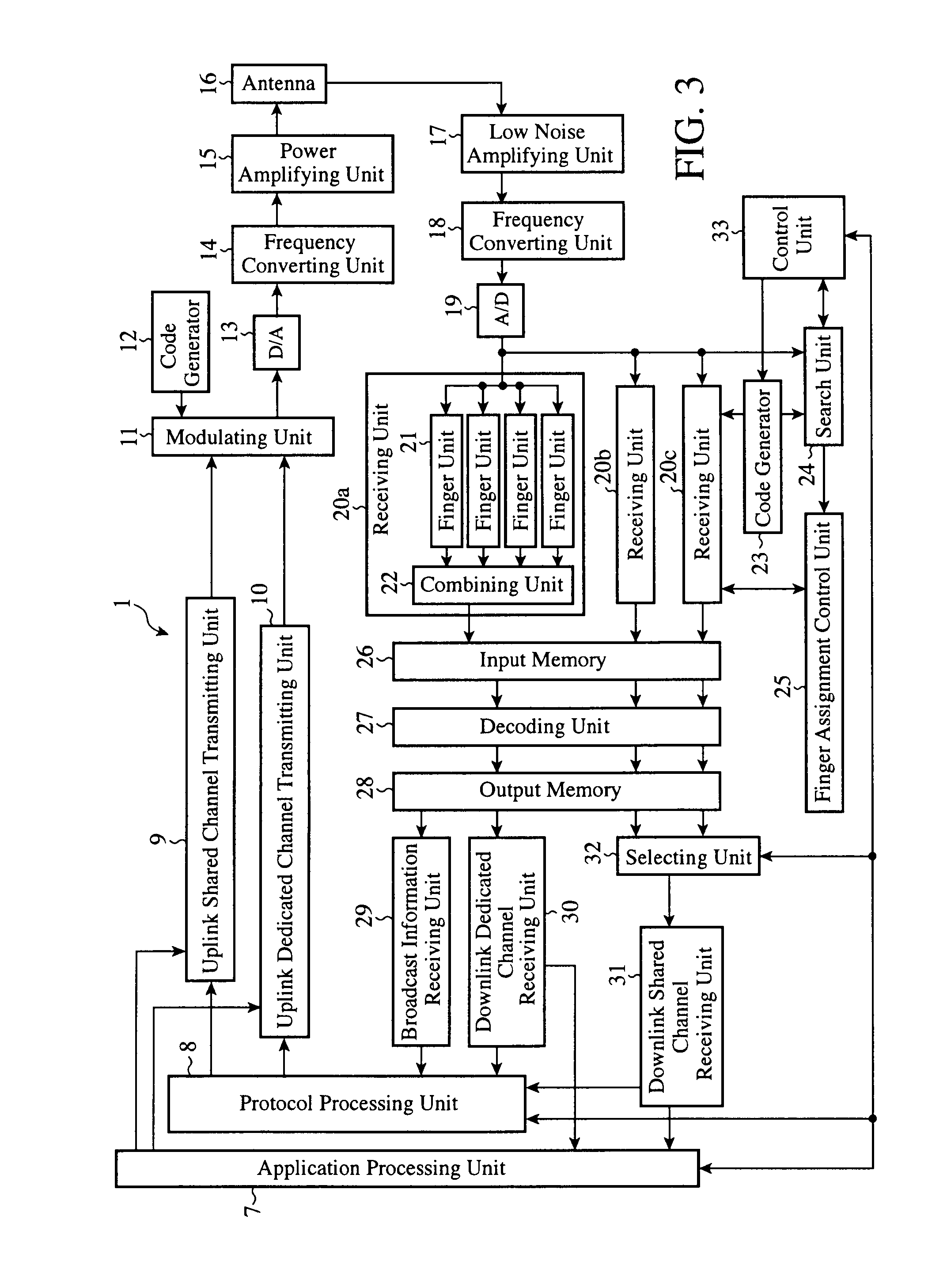Mobile communications system, base station, and mobile terminal
- Summary
- Abstract
- Description
- Claims
- Application Information
AI Technical Summary
Benefits of technology
Problems solved by technology
Method used
Image
Examples
embodiment 1
[0060]In accordance with this Embodiment 1, an emergency information flag (an emergency information indicator) indicating the presence or absence of emergency information is disposed in an MCCH which is an MBMS control channel, and a mobile terminal is enabled to check the presence or absence of the emergency information at regular intervals. Accordingly, even while receiving information other than the emergency information by using an MBMS, the mobile terminal can recognize the existence of the emergency information by using the emergency information flag, and can receive an emergency information channel included in the MBMS.
[0061]FIG. 1 is a diagram showing the structure of a mobile communications system in accordance with the present invention. In this system, emergency information is notified to all mobile terminals 1 which support the MBMS by using the MBMS. In FIG. 1, the mobile communications system in accordance with the present invention is provided with mobile terminals 1,...
embodiment 2
[0131]A mobile communications system in accordance with this Embodiment 2 notifies the occurrence of emergency information to even a mobile terminal which is communicating individual data, such as data about a voice call or packets, but is not receiving any MBMS data, thereby enabling the mobile terminal to receive an emergency information channel included in an MBMS.
[0132]Although the fundamental structures of each mobile terminal, each base station, and each base station control apparatus which are disposed in the mobile communications system in accordance with Embodiment 2 are the same as those according to above-mentioned Embodiment 1 shown in FIGS. 1 to 5, they differ from those of Embodiment 1 in that when emergency information occurs, each base station transmits an MICH to mobile terminals before transmitting an MCCH, and a mobile terminal which is communicating individual data, such as data about a voice call or packets, but is not receiving any MBMS data receives the MCCH a...
embodiment 3
[0154]A mobile communications system in accordance with this Embodiment 3 is constructed in such a way as to notify the occurrence of emergency information to even a mobile terminal placed in an idle state in which it is not receiving any MBMS data to enable the mobile terminal to receive an emergency information channel included in an MEMS.
[0155]Although the fundamental structures of each mobile terminal, each base station, and each base station control apparatus which are disposed in the mobile communications system in accordance with Embodiment 3 are the same as those according to above-mentioned Embodiment 1 shown in FIGS. 1 to 5, they differ from those of Embodiment 1 in that when emergency information occurs, each base station transmits an MICH to mobile terminals before transmitting an MCCH, and a mobile terminal placed in an idle state in which it is not receiving any MBMS data receives the MCCH according to the description of the indicator of the MICH, and then determines t...
PUM
 Login to View More
Login to View More Abstract
Description
Claims
Application Information
 Login to View More
Login to View More - R&D Engineer
- R&D Manager
- IP Professional
- Industry Leading Data Capabilities
- Powerful AI technology
- Patent DNA Extraction
Browse by: Latest US Patents, China's latest patents, Technical Efficacy Thesaurus, Application Domain, Technology Topic, Popular Technical Reports.
© 2024 PatSnap. All rights reserved.Legal|Privacy policy|Modern Slavery Act Transparency Statement|Sitemap|About US| Contact US: help@patsnap.com










